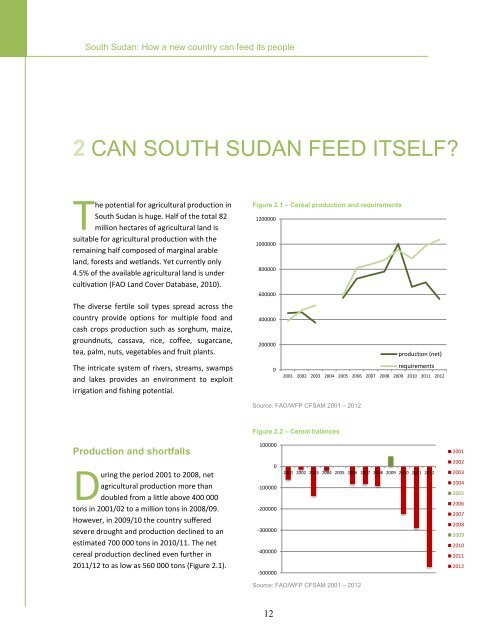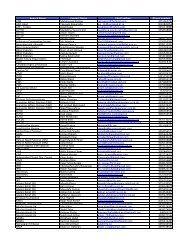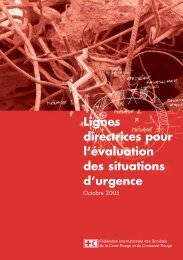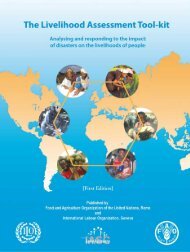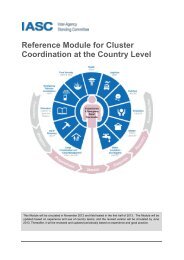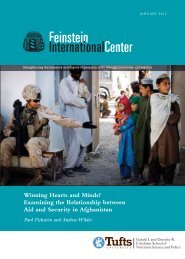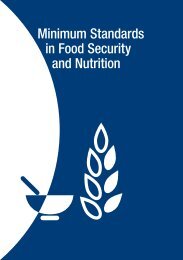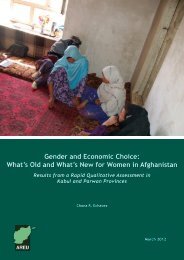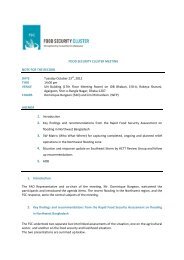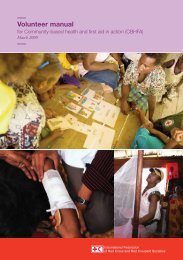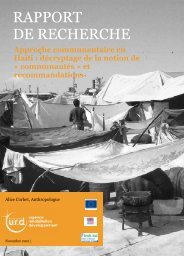4.15 MB - Food Security Clusters
4.15 MB - Food Security Clusters
4.15 MB - Food Security Clusters
- No tags were found...
You also want an ePaper? Increase the reach of your titles
YUMPU automatically turns print PDFs into web optimized ePapers that Google loves.
South Sudan: How a new country can feed its peopleCan South Sudan Feed Itself?2 CAN SOUTH SUDAN FEED ITSELF?The potential for agricultural production inSouth Sudan is huge. Half of the total 82million hectares of agricultural land issuitable for agricultural production with theremaining half composed of marginal arableland, forests and wetlands. Yet currently only4.5% of the available agricultural land is undercultivation (FAO Land Cover Database, 2010).Figure 2.1 – Cereal production and requirements12000001000000800000600000The diverse fertile soil types spread across thecountry provide options for multiple food andcash crops production such as sorghum, maize,groundnuts, cassava, rice, coffee, sugarcane,tea, palm, nuts, vegetables and fruit plants.The intricate system of rivers, streams, swampsand lakes provides an environment to exploitirrigation and fishing potential.4000002000000production (net)requirements2001 2002 2003 2004 2005 2006 2007 2008 2009 2010 2011 2012Source: FAO/WFP CFSAM 2001 – 2012Figure 2.2 – Cereal balancesProduction and shortfalls1000002001During the period 2001 to 2008, netagricultural production more thandoubled from a little above 400 000tons in 2001/02 to a million tons in 2008/09.However, in 2009/10 the country sufferedsevere drought and production declined to anestimated 700 000 tons in 2010/11. The netcereal production declined even further in2011/12 to as low as 560 000 tons (Figure 2.1).0-100000-200000-300000-400000-5000002001 2002 2003 2004 2005 2006 2007 2008 2009 2010 2011 201220022003200420052006200720082009201020112012Source: FAO/WFP CFSAM 2001 – 201212


